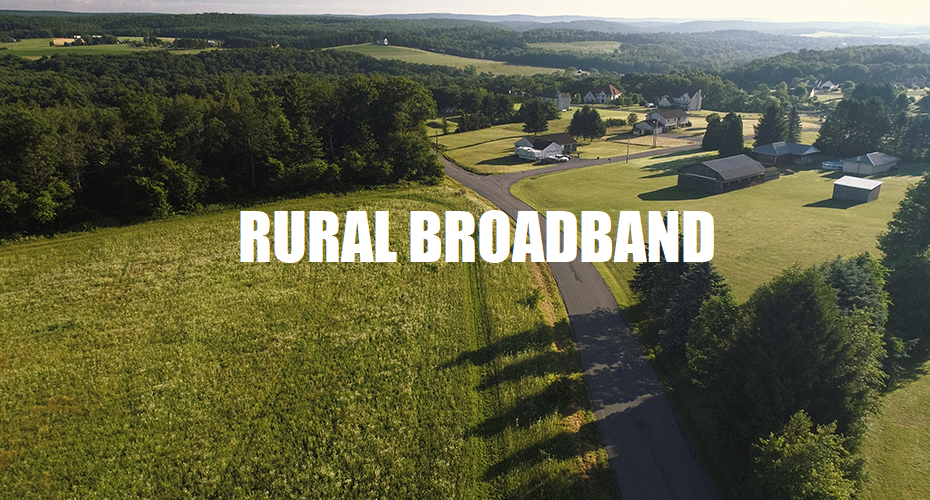
The Federal Communications Commission today proposed taking its biggest single step to date toward closing the rural digital divide by establishing the Rural Digital Opportunity Fund, which would direct up to $20.4 billion to expand broadband in unserved rural areas.
The proposal would raise the bar for rural broadband deployment by making more areas eligible for support and requiring faster service than last year’s Connect America Fund (CAF) Phase II reverse auction. If the FCC ultimately approves these proposals, millions more rural homes and small businesses would be connected to high-speed broadband networks providing up to gigabit speeds.
In a Notice of Proposed Rulemaking adopted today, the FCC seeks comment on continuing the expansion of broadband where it’s lacking by using an efficient reverse auction that builds on the success of last year’s CAF Phase II auction. The Rural Digital Opportunity Fund would focus on areas currently served by “price cap” carriers, along with areas that were not won in the CAF Phase II auction and other areas that do not currently receive any high-cost universal service support.
The Notice seeks comment on proposals to:
- Make eligible for support any price cap area currently receiving CAF Phase II model-based support but lacking broadband at speeds of 25 Megabits per second (Mbps) downstream, 3 Mbps upstream, as well as the areas unawarded in the CAF Phase II auction.
- Make additional homes and businesses eligible for support by including areas that remain unserved, despite previous expectations that they would be served without subsidies due to estimated lower costs.
- Raise the standard for broadband deployment from the CAF’s 10 Mbps/1 Mbps minimum to at least 25 Mbps/3 Mbps, with incentives for faster speeds.
- Allocate support through a multi-round reverse auction like that used in last year’s CAF Phase II auction. In that auction, competition reduced the cost of reaching over 700,000 unserved homes and businesses from the $5 billion auction reserve price to $1.488 billion.
- Implement a two-phase approach:
- In Phase I, target wholly unserved census blocks, using an existing FCC data collection
- In Phase II, target unserved locations in partially unserved census blocks, using new, more granular data being developed through the Digital Opportunity Data Collection, along with areas not won in Phase I
- Set a budget of $20.4 billion in high-cost universal service support, making available at least $16 billion for Phase I and the remainder available for Phase II. Both phases would have 10-year support terms.
- Adopt technology-neutral standards, opening the auction to all types of providers that can meet program standards.
- Ensure a smooth transition of support from existing providers to auction winners.
- Include measures to require accountability to ensure that funding is used wisely to expand broadband deployment.
Closing the digital divide and bringing affordable high-speed broadband to all Americans is the Commission’s top priority. The proposed Rural Digital Opportunity Fund would be a critical next step in the FCC’s ongoing effort provide rural America with the same opportunities available in urban areas.
Action by the Commission August 1, 2019 by Notice of Proposed Rulemaking (FCC 19-77). Chairman Pai, Commissioners O’Rielly and Carr approving. Commissioners Rosenworcel and Starks approving in part and dissenting in part. Chairman Pai, Commissioners O’Rielly, Carr, Rosenworcel, and Starks issuing separate statements.
This is a press release from the FCC.


Bulloch Public Safety
Several Arrested in Bulloch for Narcotics Trafficking After Citizen Complaints

Bulloch Public Safety
12/19/2025 Booking Report for Bulloch County

Chattooga Local News
Trump signs executive order reclassifing marijuana

Bulloch Public Safety
12/18/2025 Booking Report for Bulloch County

Bulloch Public Safety
11/24/2025 Booking Report for Bulloch County

Bulloch Public Safety
12/12/2025 Booking Report for Bulloch County

Bulloch Public Safety
12/01/2025 Booking Report for Bulloch County

Bulloch Public Safety
12/11/2025 Booking Report for Bulloch County

Bulloch Public Safety
12/16/2025 Booking Report for Bulloch County





